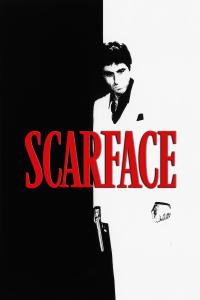| Mafketel | ||
|---|---|---|

| abbreviations found in torrent descriptions. CAM A cam is a theater rip usually done with a digital video camera. A mini tripod is sometimes used, but a lot of the time this wont be possible, so the camera make shake. Also seating placement isn’t always idle, and it might be filmed from an angle. If cropped properly, this is hard to tell unless there’s text on the screen, but a lot of times these are left with triangular borders on the top and bottom of the screen. Sound is taken from the onboard microphone of the camera, and especially in comedies, laughter can often be heard during the film. Due to these factors picture and sound quality are usually quite poor, but sometimes we’re lucky, and the theater will be fairly empty and a fairly clear signal will be heard. TELESYNC (TS) A telesync is the same spec as a CAM except it uses an external audio source (most likely an audio jack in the chair for hard of hearing people). A direct audio source does not ensure a good quality audio source, as a lot of background noise can interfere. A lot of the times a telesync is filmed in an empty cinema or from the projection booth with a professional camera, giving a better picture quality. Quality ranges drastically, check the sample before downloading the full release. A high percentage of Telesyncs are CAMs that have been mislabeled. TELECINE (TC) A telecine machine copies the film digitally from the reels. Sound and picture should be very good, but due to the equipment involved and cost telecines are fairly uncommon. Generally the film will be in correct aspect ratio, although 4:3 telecines have existed. A great example is the JURASSIC PARK 3 TC done last year. TC should not be confused with TimeCode , which is a visible counter on screen throughout the film SCREENER (SCR) A screener (SCR) is an advance screening of a film or television series sent to critics, awards voters, video stores (for their manager and employees), and other film industry professionals, including producers and distributors. Screeners help critics and award voters see smaller movies that don't have the marketing advantage or distribution of major studio releases. Positive mentions can result in awards consideration. A screener often has no post-processing. First it was sent out in VHS Tapes but nowadays physical DVD copies still appear to be issued or a link to stream directly, but screeners are also distributed digitally to members of the Academy of Motion Picture Arts and Sciences, and the media/publicity sites of individual television networks for television shows. When screeners leak online, they are often tagged "DVDSCR", and often have an on-screen graphic watermarked with the receiver's email address. DVD-SCREENER (DVDscr) A DVD Screener is a promotional copy of a motion picture sent by a movie studios (on a DVD-Video disc) before the official DVD release date to movie critics, censors etc. The term DVDSCR is used by movie pirates to describe the source material of a bootleg SVCD, DivX, XviD or DVDR copy of a DVD Screener. These copies are usually of high, near-retail quality, but often contain some little extras on the video stream. These extras includes timers, scrollers, black & white scenes, logos and serial numbers. The scrollers contain information about a few things, such as why some scenes of the movie appear in black & white, or have anti-piracy information that tell you how to contact anti-piracy groups if you have rented or purchased a DVD Screener copy of a movie. Serials are used to help track where the DVD Screeners were sent to (if they are copied and end up on the street or Internet) but these are usually blocked out completely by pirates. Movie studios often also leave logos or watermarks on Screeners. The issue of DVD Screener piracy has caused controversy in Hollywood; even at one stage resulting in a DVD Screener ban. Plans were also introduced for the production of encrypted DVD Screeners (using the AES 128-bit encryption standard) that would special equipment (more than just a mere DVD Player) to be played back. DVDRip A copy of the final released DVD. If possible this is released PRE retail (for example, Star Wars episode 2) again, should be excellent quality. DVDrips are released in SVCD, DivX/XviD or X264 with MP3 or AAC audio. Generally found in size ranging from 600b~750mb. HDRip HDrip is rip from HD sources like Blu-Ray Disc or HDTV . It is re-sized down to dvd res or it can be 1080p or 720p. Yify's Torrents are all HDRip's which is having a size of ~700 Mb (720p) and ~3 Gb (1080p & 3D). HDRips are generally lack in quality when viewed in bigger screen and above 2.1 channel speakers as the bit rate of the video is reduced and audio channels are cut down to 2.0 ch or 2.1 ch for reducing the size of the movie. WebRip This is a file ripped from a DRM-free streaming service, such as Hulu, CrunchyRoll or WWE Network. The quality is comparable to WEB-DL, but bitrates are lower to save on streaming bandwidth. The file will be extracted from the RTMP protocol and losslessly remuxed from a MP4 or FLV container to MKV. WEB-DL This is a movie or TV show downloaded via an on-line distribution website (web download) like Amazon or iTunes. The quality is quite good since they are not re-encoded. The video (H264) and audio (AC3/AAC) streams are usually extracted from the iTunes or Amazon file and then remuxed into a MKV container without sacrificing quality. An advantage with these releases is that they mostly have no network logos on screen, just like BD/DVDRips. WEBCap This is a rip created by capturing video from a DRM-enabled streaming service, such as Amazon Instant or Netflix. Quality can range from mediocre (comparable with low quality XVID encodes) to excellent (comparable with high quality BR encodes). Essentially, the quality of the image obtained depends on internet connection speed and the specifications of the recording machine. VHSRip Transferred off a retail VHS, mainly skating/sports videos and XXX releases. Still can be found for videos prior 2009~2010. Used special recording equipment's to transfer to transfer or record the video without losing the quality or the rip. TVRip TV episode that is either from Network (capped using digital cable/satellite boxes are preferable) or PRE-AIR from satellite feeds sending the program around to networks a few days earlier .Some programs such as WWF Raw Is War contain extra parts, and the “dark matches” and camera/commentary tests are included on the rips. PDTV is capped from a digital TV PCI card, generally giving the best results, and groups tend to release in SVCD for these. VCD/SVCD/DivX/XviD rips are all supported by the TV scene. WORKPRINT (WP) A workprint is a copy of the film that has not been finished. It can be missing scenes, music, and quality can range from excellent to very poor. Some WPs are very different from the final print (Men In Black is missing all the aliens, and has actors in their places) and others can contain extra scenes (Jay and Silent Bob) . WPs can be nice additions to the collection once a good quality final has been obtained. DivX Re-Enc A DivX re-enc is a film that has been taken from its original VCD source, and re-encoded into a small DivX file. Most commonly found on file sharers, these are usually labeled something like Film.Name.Group (1of2) etc. Common groups are SMR and TND. These aren’t really worth downloading, unless you’re that unsure about a film u only want a 200mb copy of it. Generally avoid. Asian Silvers/PDVD These are films put out by eastern bootleggers, and these are usually bought by some groups to put out as their own. Silvers are very cheap and easily available. R5 The R5 is a retail DVD from region 5. Region 5 consists of the Indian subcontinent, most of Africa, North Korea, Russia and Mongolia. R5 releases differ from normal releases in that they are a direct Telecine transfer of the film without any of the image processing. If the DVD does not contain an English-language audio track, the R5 video is synced to a previously released English audio track. Then a LiNE tag is added. This means that the sound often is not as good as DVD-Rips. To account for the lesser audio quality typically present in R5 releases, some release groups take the high quality Russian or Ukrainian 5.1 channel audio track included with the R5 DVD and modify it with audio editing software. They remove the non-english spoken portion of the audio and sync the remaining portion, which contains high quality sound effects and music with a previously recorded source of english vocals usually taken from a LiNE tagged release. The result of this process is an almost retail DVD quality surround sound audio track which is included in the movie release. Releases of this type are normally tagged AC3.5.1.HQ and details about what was done to the audio track as well as the video are present in the release notes accompanying the pirated movie. The other regions are: R0 No Region Coding R1 United States of America, Canada R2 Europe, including France, Greece, Turkey, Egypt, Arabia, Japan, Israel and South Africa R3 Korea, Thailand, Vietnam, Borneo and Indonesia R4 Australia and New Zealand, Mexico, the Caribbean, and South America R5 India, Africa (except Egypt, South Africa, Swaziland, and Lesotho), Russia and former USSR countries R6 Peoples Republic of China R7 Unused R8 Airlines/Cruise Ships R9 Expansion (often used as region free) R1 and R2 are considered the best quality. VODRip VODRip stands for Video-On-Demand Rip. This can be done by recording or capturing a video/movie from an On-Demand service such as through a cable or satellite TV service. Most services will state that ripping or capturing films is a breach of their use policy, but it is becoming more and more popular as it requires little technology or setup. There are many online On-Demand services that would not require one to connect their TV and computer. BDRip This quality prints are directly from the Blu ray Discs. In short, “BDRip” stands for BluRay Disk Rip. Also read about “BD5? and “BD9?. BDRips are encoded directly from the BluRay disk, so should be of better quality than a DVDRip. They usually have a resolution of 720p (or 1080p), and are encoded using the matroska (.mkv) container and x264 codec. BRRip Similar to DVD-Rip, only the source is a Blu-ray Disc. A BRRip in DVD-Rip size often looks better than a same-size DVD rip because encoders have better source material. A common misconception among downloaders is that BDRip and BRRip are the same thing. They differ in that a BDRip comes directly from the Blu-ray source, while a BRRip is encoded from a pre-release, usually from a 1080p BDRip from another group. BDRips are available in DVD-Rip sized releases (commonly 700 MB and 1.4 GB) encoded in Xvid, as well as larger DVD5 or DVD9 (often 4.5 GB or larger, depending on length and quality) sized releases encoded in x264. 4K a.k.a UHD a.k.a 2160p 4K and UHD which offers four times the definition of Full HD (1080p) has also started taking effect in the warez community. Encoders use mkv containers to release movies in UDH. Most of the 4K torrents are upscaled 1080p which look blurred when viewing in larger screen but there are namely a few real deal out there which uses UHD BD sources for encoding. VCD VCD is an mpeg1 based format, with a constant bitrate of 1150kbit at a resolution of 352×240 (NTCS). VCDs are generally used for lower quality transfers (CAM/TS/TC/Screener(VHS)/TVrip(analogue) in order to make smaller file sizes, and fit as much on a single disc as possible. Both VCDs and SVCDs are timed in minutes, rather than MB, so when looking at an mpeg, it may appear larger than the disc capacity, and in reality u can fit 74min on a CDR74. SVCD SVCD is an mpeg2 based (same as DVD) which allows variable bit-rates of up to 2500kbits at a resolution of 480×480 (NTSC) which is then decompressed into a 4:3 aspect ratio when played back. Due to the variable bit-rate, the length you can fit on a single CDR is not fixed, but generally between 35-60 Mins are the most common. To get a better SVCD encode using variable bit-rates, it is important to use multiple “passes”. this takes a lot longer, but the results are far clearer. XVCD/XSVCD These are basically VCD/SVCD that don’t obey the “rules”. They are both capable of much higher resolutions and bit-rates, but it all depends on the player to whether the disc can be played. X(S)VCD are total non-standards, and are usually for home-ripping by people who don’t intend to release them. DivX/XviD XviD & DivX are the most commonly encoded movies. DivX used to be the most popular, until it went from open source to a corporation that bought the rights & started charging for it. In the last year or so, many stand-alone DVD players have been released that are capable of playing DivX/XviD movies, which has made this the most popular form of encoding. The majority of XviD/DivX rips are taken from DVDs, and are generally in as good quality as possible that can fit on one 700MB CDR disc, which is why most XviD/DivX movies are almost exactly 700MB, so they can be burnt onto a CDR & played in these DVD players Various codecs exist, the most popular at the moment being the new XviD 1.2 codec. x264 x264 is a free software library for encoding H.264/MPEG-4 AVC video streams. These are commonly used codec packs for encoding a movie to smaller size with good quality. .mp4 videos use x264 codec. Resulting in better quality with minor loss in quality. Yify releases are generally x264 codec videos. HEVC(x265) x265 is an open source free software and library for encoding video using the High Efficiency Video Coding (HEVC/H.265) standard. x265 is the currently used low space demanding video format. 20 minutes 720p video can be sized below 80mb without any quality loss. HEVC/H.265 are currently used to encode TV Shows. Pay-Per-View Rip PPVRips come from Pay-Per-View sources. All the PPVRip releases are brand new movies which have not yet been released to Screener or DVD, but are available for viewing by hotel customers. CVD CVD is a combination of VCD and SVCD formats, and is generally supported by a majority of DVD players. It supports MPEG2 bit-rates of SVCD, but uses a resolution of 352×480(ntsc) as the horizontal resolution is generally less important. Currently no groups release in CVD. DVD-R Is the recordable DVD solution that seems to be the most popular (out of DVD-RAM, DVD-R and DVD+R). it holds 4.7gb of data per side, and double sided disk hold 8.5gb of data. Dolby Vision(DV) .DV.MKV.x265 Dolby Vision allows for a maximum resolution of 8K, up to 12-bit color depth, maximum peak brightness of 10,000 nits. However, according to the Dolby Vision white paper, as of 2018 professional reference monitors, such as the Dolby Vision HDR reference monitor, are currently limited to 4,000 nits of peak brightness. Dolby Vision includes the PQ transfer function, a wide-gamut color space (ITU-R Rec. BT.2020 in YCBCR or IPTPQc2), up to 8K resolution, and for some profiles (FEL) up to 12-bit. It can encode mastering display colorimetry information using static metadata (SMPTE ST 2086) and also provide dynamic metadata (SMPTE ST 2094-10, Dolby format) for each scene or frame.[14] This dynamic metadata or Dynamic HDR allows adjusting of brightness and contrast (in reality, the tone curve) on the scene by scene or even frame by frame bases as and when required and adjusts it many times during the video/movie.[citation needed] It is considered to be future-proof. Dolby Vision includes dynamic metadata that are used to adjust the brightness, color and sharpness[citation needed] of each frame of the video to match the display color volume (i.e. the maximum and minimum brightness capability and the color gamut). It allows for the creative intents to be preserved on all Dolby Vision compatible displays. Dolby Vision and HDR10+ do not use the same dynamic metadata. MIXED The files are from different sources. Last edited by Mafketel on 2022-05-02 08:46:23 | |
Like 13 | ||
| Post liked by - ArchM, Balerion | ||
| Mafketel | ||
|---|---|---|

| IVTC (Inverse Telecine): Inverse Telecine is the process where video editing tools reverse telecine process. Basically inverse telecine brings back movie's original frame rate from NTSC's 29.97fps to 24fps. COMPLETE: A release is COMPLETE when it's a DVD5. When a DVD is COMPLETE, it didn't need any adjustments and the video is therefore untouched. Most DVD's though are DVD9, so they need to be compressed to DVD5. DVD5 is much more wanted since all DVD players can read these DVD's, and almost every DVD burner can burn them. DVD9 discs are less popular, they are more expensive and not many people can burn a DVD9. LiMiTED: A movie is LiMiTED when it has a limited theater run. Generally smaller films (such as art house films) are released as limited. The scene considers a movie limited when it has a generally opening in less than 300 UK theaters, or in less than 500 USA theaters. In the scene jargon, it's usually called 300 UK screens, or 500 USA screens. Officially, it's not the opening weekend's number of theaters that counts, but the peak of the number of theaters. For example; when a movie has 275 UK screens in the opening weekend, and 1 week later it has 325 screens, it's not limited. STV: STV stands for Straight To Video. These movies were never released in theaters, instead, they were immediately released on video/dvd. Therefore, a lot of sites do not allow these movies. FESTiVAL: This is a variation of STV/LiMiTED. A FESTiVAL is a movie which hasn't been shown in a public theater, but has been shown on a film festival (such as Cannes Film Festival). iNTERNAL: An internal release is done for several reasons. The most common reason is because it has already been released before, and with iNTERNAL in title, the release won't be nuked. iNTERNAL's are quite common. Also lower quality theater rips are done iNTERNAL so it doesn't lower the reputation of the group. An iNTERNAL release is available as normal on the groups affiliate sites, but they can't be traded to other sites without request from the site ops. Although a release is iNTERNAL, it still can be very popular. For mp3's the interla-tag is different. For mp3 releases it's release title-year-Group_iNT. That way the internal release won't be calculated into the group's stats. This avoids mp3 groups from doing a lot of internal releases, since they would just do that to get better stats. Some groups rename iNTERNAL to iNT, since this much shorter. Subbed: If a release is subbed, it typically has hard encoded subtitles burned into the movie. It may also be soft subs and have a sub file with the movie. These are generally in malaysian/chinese/thai etc, and sometimes there are two different languages, which can take up quite a large amount of the screen. SVCD and DVD support switchable subtitles, so some DVDRips and most DVD's are released with switchable subs. Unsubbed: When a movie has been released subbed before, an unsubbed release may be released. Custom.Subbed: A release can also be custom subbed. Movies often are released earlier in the USA than in Europe. These movies mostly contain a few subtitles, the ones that are spoken in the USA. European groups can create custom subtitles and add these to the dvd(rip). Off course, it's not just European, also Japaneese movies can be subbed english for example. Dubbed: If a film is dubbed, it is a special version where the actors' voices are in another language. Dubbed versions of English-language films are for people who don't understand English very well. In some countries, dubbing is very common, for example Germany. SE: SE stands for Special Edition. Like the name says, it's a special dvd edition of a movie. Often special editions contain extra material like deleted scenes, interviews, or a making-of. DC: DC stands for Director's Cut. A director's cut is a specially edited version of a movie that is supposed to represent the director's own approved edit of the movie. It is often released some time after the original release of the film, where the original release was released in a version different from the director's approved edit. 'Cut' is synonymous with 'edit' in this context. DL: DL stands for Dual-Language, meaning the dvd contains more than one language. Synonym: ML. FS / WS (Aspect Ratio Tags): These are FS for Full Screen and WS for Widescreen (letterbox). Language Codes: The language of the movie and the language of the subtitles can also be mentioned in the release name. Sometimes the language is fully mentioned in the release name, such as DUTCH, NORDiC, GERMAN and iTALiAN. Sometimes it's shortened, and then the ISO standard country abbreviations are used. These are the same as the abbreviations which are used for www-domains, for example: NL (Dutch), NO (Nordic), DE (Germany), IT (Italian). When there are multiple languages or subtitles, MULTi or MULTiSUBS is mentioned. In general, when the language is fully mentioned in the release name, this is the movie language. The abbreviation usually means the subtitle(s). So DUTCH will mean that the language is Dutch, and NL will mean that the menu/subtitle is Dutch. Extended: Sometimes movies are released again on DVD because now the movie is extended. They have put back deleted scenes. Digitally Remastered: Digitally remastered means that an older not-digital movie has been re-edited, remastered and is released on DVD. Some really old movies look very bad compared to the new digital movies. Then they remaster it to make it look better, edit & recolor the video, etcetera. Remastering generally implies some sort of upgrade to a previous existing product, frequently designed to encourage people to buy a new version of something they already own. Rated/Unrated: Rated means a movie is censored, unrated logically means uncensored. Encode: Encoding is opposite of decoding. Encoding means that a file, whether it is an audio, video or picture file, is compressed to another format that normally takes up less physical drive space than the previous format. Recode: A recode is a previously released version of a movie, usually filtered through TMPGenc to remove subtitles, fix color etc. Whilst they can look better, it's not looked upon highly as groups are expected to obtain their own sources. Cinavia: Cinavia is a Digital Rights Management (DRM) system utilizing audio watermaking technology created by verance that can detect when an illegal movie download / pirate DVD is being played on a PlayStation 3 (PS3) console and modern Blu-ray stand-alone players on the market. Content protected by this technology carry inaudible codes (the watermark) embedded in the audio tracks by the owner of the copyright that indicate how and where they are to be used. PROPER: Due to scene rules, whoever releases a certain release the first, has won that race. As an example when a group releases the CAM version of Titanic the first. If there is something "wrong" with the release (poor quality, out-of-sync, audio errors etc.) and another group has a better/correct version, it can release it and add PROPER to the release title to avoid being nuked. However, the source must be the same as the original release. For example: A poor quality CAM release by group A and group B releases their CAM release PROPER. A Telesync release doesn't PROPER a CAM release, because the source is different. PROPER is the most subjective tag in the scene and a lot of people will generally argue whether the PROPER is better than the original release. The reason for the PROPER should always be mentioned in the NFO. REPACK: If a group releases a bad rip, they can release a Repack. A Repack is a fixed version of the original release. It's similar to PROPER but then done by the same group. Note that a Repack is different from a fix. A Fix will repair the original release whilst a repack is a new release. Rerip: A previous rip was bad, now it's ripped again properly. Similar to a repack. READNFO: When something important is mentioned in the NFO or as a replacement for PROPER, READNFO can be added to the release title. RAW: Raw means that video data is uncompressed. RAW video, depending on resolution and frame rate can take up many GBs of space for sm CH-DVD (China High Definition DVD): CH-DVD is a high-definition DVD format released in September 2007. This format is based on HD-DVD technology (although the two are not compatible) as well as Chinese-owned intellectual property. CH-DVD was developed by the Optical Memory National Engineering Research Center (OMNERC) with support from the Chinese government. China intends making this the national default standard for high definition DVDs, with a big push to market in 2008. HD-DVD: HD DVD is an optical disc storage technology which competed with Blu-ray in the post-DVD high-definition/high-storage market. Like Blu-ray, HD DVD uses a blue laser used instead of red to increase storage capacity. A single-layer HD DVD can hold 15GB of data; a dual-layer disc can hold 30GB. Prototypes have been demonstrated up to 45GB and the theoretical limit is 60GB. Although this is a big improvement over DVD, it is well short of Blu-ray's capacity. PDVD (Pirated DVD): PDVDs are usually sold by movie bootleggers. A PDVD is usually an asian silver or, telesync copy of a movie, which has been encoded to DVD. Quality varies of course. PDVDs are widely available throughout some countries at an extremely low price. 3GP: 3GP is a multimedia container format defined by the Third Generation Partnership Project (3GPP) for 3G UMTS multimedia services. It is used on 3G mobile phones but can also be played on some 2G and 4G phones. 3GP file format stores video streams as MPEG-4 Part 2 or H.263 or MPEG-4 Part 10 (AVC/H.264), and audio streams as AMR-NB, AMR-WB, AMR-WB+, AAC-LC, HE-AAC v1 or Enhanced aacPlus (HE-AAC v2). 3GPP allowed use of AMR and H.263 codec's in the ISO base media file format (MPEG-4 Part 12), because 3GPP specified the usage of the Sample Entry and template fields in the ISO base media file format as well as defining new boxes to which codec's refer. 3G2: 3G2 is a multimedia container format defined by the 3GPP2 for 3G CDMA2000 multimedia services. It is very similar to the 3GP file format, but has some extensions and limitations in comparison to 3GP. The 3G2 file format can store the same video streams and most of the audio streams used in the 3GP file format. In addition, 3G2 stores audio streams as EVRC, EVRC-B, EVRC-WB, 13K (QCELP), SMV or VMR-WB, which was specified by 3GPP2 for use in ISO base media file format. The 3G2 specification also defined some enhancements to 3GPP Timed Text. 3G2 file format does not store Enhanced aacPlus (HE-AAC v2) and AMR-WB+ audio streams.[7] For the storage of MPEG-4 media (AAC audio, MPEG-4 Part 2 video, MPEG-4 Part 10 - H.264/AVC) in 3G2 files, the 3G2 specification refers to the MP4 file format and the AVC file format specification, which described usage of this content in the ISO base media file format. For the storage of H.263 and AMR content 3G2 specification refers to the 3GP file format specification. HD-VMD (High Definition Versatile Multilayer Disc): HD-VMD is a high-capacity red laser optical disc technology. VMD was intended to compete with the blue laser Blu-ray Disc format and had an initial capacity of up to 30GB per side. AVCHD: AVCHD, or Audio and Video Compression for High Definition, is a video format that is designed for camcorder use. It uses a disc structure designed for Blu-ray Disc standard compatibility, and benefits from native support among most Blu-ray players on the market, including the PlayStation 3 (PS3) console. The format is comparable to other handheld video camcorder formats including HDV. HDTV (High Definition Televison): Digital recording from a source stream at either 1080i or 720p at a bitrates from 19,39mbps or higher. PDTV (Pure Digital Television): Other resolution digital recordings from source streams at a bitrate of 10+mbps or higher. It is a label given to files that were ripped directly from a purely digital source, having less resolution than HDTV. This is accomplished by using a TV tuner card capable of receiving Digital Video Broadcasts or C-Band. SDTV (Standard Digital Television): Digital recording or capture from a source stream at any resolution with bitrates under 10mbps.This includes DirecTiVo but also captures from digisat or digicable with analog capture cards. IDTV (Improved-definition Television) IDTV is a transmitter or receiver that exceeds the performance requirements of the NTSC standard but also remain in the general parameters of NTSC emissions standards. IDTV improvements can be made either at the television transmitter or receiver. A television receiver could improve the video quality by using techniques such as frame doubling, line doubling and digital filtering. TVRip (Analog TV Rip) Recorded from analog TV, lowest quality of all TV rips. SHV (Super Hi-Vision): The system uses a video format with 7680 x 4320 pixels (16 times higher than standard Hi-vision, NHK's HDTV system) . This world's first video system with 4000 scanning lines delivers ultra-clear, realistic three-dimensional images that can be achieved only by ultrahigh-definition technology. The individual scanning lines are not visually noticeable even when relatively close to the screen, reflecting the high resolution of the system. What's more, a wider viewing angle conveys a stronger sense of a reality. The new 3-D audio system with 24 loudspeakers dramatically enhances presence. Still an experimental codec. DVB (Digital Video Broadcast): The standard for direct broadcast television in Europe and the US Based on MPEG2 Compression. DSR (Digital Satellite Rip) Recorded from Digital Satellite, quality is similar to PDTV. PPV (Pay Per View television): Pay television programming for which viewers pay a separate fee for each program ordered. Region codes: R1, R2, R3, R4, R5, R6 (Region Code): A DVD is released in a certain geographical area, or region and it's not viewable on a DVD player outside of that region. This was designed to stop people buying American dvd's and watching them earlier in other countries or for older films where world distribution is handled by different companies. A lot of players can either be hacked with a chip, or via a remote to disable this. The regions are: 0 - Region 0 is not an official setting; discs that bear the region 0 symbol either have no flag set or have regions 1-6 flags set. 1 - United States, Canada, Bermuda, U.S. territories 2 - Europe (except Russia, Ukraine, and Belarus), Middle East, Egypt, Japan, South Africa, Swaziland, Lesotho, Greenland, French Overseas departments and territories. 3 - Southeast Asia, South Korea, Republic of China (Taiwan), Hong Kong, Macau. 4 - Mexico, Central America, Caribbean, South America, New Zealand, Australia, Papua New Guinea and much of Oceania. 5 - India, Afghanistan, Sri Lanka, Ukraine, Belarus, Russia, Africa (except Egypt, South Africa, Swaziland, and Lesotho), Central and South Asia, Mongolia, North Korea. 6 - People's Republic of China. 7 - Reserved for future use (found in use on protected screener copies of MPAA-related DVDs and "media copies" of pre-releases in Asia) 8 - International venues such as aircraft, cruise ships, etc. ALL - Region ALL discs have all eight flags set, allowing the disc to be played in any locale on any player. Blu-ray Disc region codes: Blu-ray Discs use a much simpler region-code system than DVD with only three regions, labeled A, B and C. A - Includes most North, Central and South American countries and South-east Asian countries including the Republic of China (Taiwan), Hong Kong, Japan and Korea. B - Includes most European and Middle-Eastern countries, all of Africa, Australia and New Zealand. C - Includes the remaining central and south Asian countries, as well as the People's Republic of China and Russia. MP3 - MPEG-1 or MPEG-2 Audio Layer III: Name of the type of file for MPEG, audio layer 3. Layer 3 is one of three coding schemes (layer 1, layer 2 and layer 3) for the compression of audio signals. Layer 3 uses perceptual audio coding and psychoacoustic compression to remove all superfluous information. It also adds a MDCT (Modified Discrete Cosine Transform) that implements a filter bank, increasing the frequency resolution 18 times higher than that of layer 2. The result in real terms is layer 3 shrinks the original sound data from a CD (with a bit rate of 1411.2 kilobits per one second of stereo music) by a factor of 12 (down to 112-128kbps) without sacrificing sound quality. 3 - Southeast Asia, South Korea, Republic of China (Taiwan), Hong Kong, Macau. 4 - Mexico, Central America, Caribbean, South America, New Zealand, Australia, Papua New Guinea and much of Oceania. 5 - India, Afghanistan, Sri Lanka, Ukraine, Belarus, Russia, Africa (except Egypt, South Africa, Swaziland, and Lesotho), Central and South Asia, Mongolia, North Korea. 6 - People's Republic of China. 7 - Reserved for future use (found in use on protected screener copies of MPAA-related DVDs and "media copies" of pre-releases in Asia) 8 - International venues such as aircraft, cruise ships, etc. ALL - Region ALL discs have all eight flags set, allowing the disc to be played in any locale on any player. WMA - Windows Media Audio: Short for Windows Media Audio, WMA is a Microsoft file format for encoding digital audio files similar to MP3 though can compress files at a higher rate than MP3. WMA files, which use the ".wma" file extension, can be of any size compressed to match many different connection speeds, or bandwidths. WAV: WAV is the format used for storing sound in files developed jointly by Microsoft and IBM. Support for WAV files was built into Windows 95 making it the de facto standard for sound on PCs. WAV sound files end with a .wav extension and can be played by nearly all Windows applications that support sound. FLAC - Free Lossless Audio Codec: Free Lossless Audio Codec (FLAC) is an audio compression codec that employs a lossless data compression algorithm. A digital audio recording compressed by FLAC can be decompressed into an identical copy of the original audio data. Audio sources encoded to FLAC are typically reduced to 50–60% of their original size. It can handle any PCM bit resolution from 4 to 32 bits per sample, any sampling rate from 1 Hz to 655,350 Hz in 1 Hz increments, and any number of channels from 1 to 8. Channels can be grouped in cases like stereo and 5.1 channel surround to take advantage of interchannel correlations to increase compression. Dolby Atmos(Atmos) Dolby Atmos is a surround sound technology developed by Dolby Laboratories. It expands on existing surround sound systems by adding height channels, allowing sounds to be interpreted as three-dimensional objects. Following the release of Atmos for the cinema market, a variety of consumer technologies have been released under the Atmos brand, using in-ceiling and up-firing speakers. Last edited by Mafketel on 2022-05-02 08:48:20 | |
Like 16 | ||
| Post liked by - Balerion | ||
| Mafketel | ||
|---|---|---|

| For the ones that I've missed you can check out the following threads Movie Types / Formats Everything Explained By HB11 And Information About TV Video Release Types! By sam Last edited by Mafketel on 2020-11-22 15:28:22 | |
Like 6 | ||
| Post liked by - Balerion | ||
| bigboy12 | ||
|---|---|---|

| Great information Makfketel,many thanks.Answers a lot of questions for this old man.:) | |
Like 6 | ||
| Post liked by - Ange1 | ||
| Mafketel | ||
|---|---|---|

| AHDTV Tag is supposed to stand for ‘Analog High Definition Television’ as defined in Scene’s SD and HD x264 TV rule sets: – HD video taken from the decoded HD output of a set-top box (e.g. component, DVI, HDMI) must be tagged in dirname as AHDTV. Decoded output of PDTV or DSR sources is banned. Releases taken from a natively recorded transport stream shall be tagged as HDTV, PDTV, or DSR. – AHDTV captures must be done at the native format of the channel, e.g. 720p or 1080i. FWIW it’s clear from the Scene ruleset the intent is to note it is not from the transport stream but that doesn’t actually make HDTV analogue so it’s a bit of a misnomer. | |
Like 7 | ||
| Post liked by - Ange1 | ||
| Mafketel | ||
|---|---|---|

| ||
Like 4 | ||
| Post liked by - Ksenia | ||








































